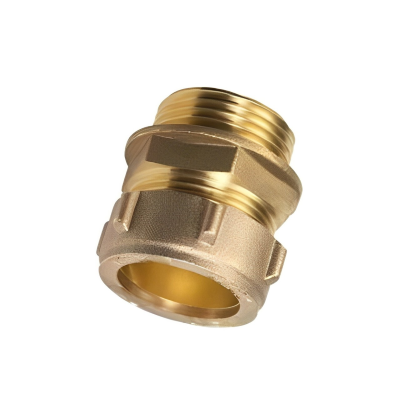Tired of wrestling with leaky pipes and complicated plumbing systems? Copper tubing compression fittings offer a simple, reliable, and durable solution. In this post, we’ll explore the benefits of these fittings, how to install them, and why they’re a plumber’s best friend.
What Are Copper Tubing Compression Fittings?
Copper tubing compression fittings are essential components in plumbing systems, providing a secure and reliable connection between copper pipes. These fittings consist of three key components: a ferrule, a nut, and a compression ring.
The ferrule is inserted into the pipe, while the nut is threaded onto the fitting. As the nut is tightened, it compresses the ferrule against the pipe, creating a watertight seal.
Types of Copper Tubing Compression Fittings
There are two main types of copper tubing compression fittings: standard compression fittings and flare fittings. Standard compression fittings are the most common type and typically feature a single ferrule. They are suitable for a wide range of plumbing applications, including residential, commercial, and industrial settings.
Flare fittings, on the other hand, require the pipe end to be flared before the fitting is installed. They are often used in high-pressure or high-temperature applications.
Why Copper Tubing Compression Fittings Are Essential
Copper tubing compression fittings offer numerous advantages that make them indispensable for plumbers. Their durability and reliability ensure long-lasting performance in plumbing systems.
Copper fittings are resistant to corrosion, making them suitable for both indoor and outdoor use. They can also withstand high pressure and temperature, making them ideal for demanding applications.
➡️ Ease of Installation and Maintenance
One of the primary reasons plumbers prefer compression fittings is their ease of installation. The process is straightforward, requiring minimal tools and expertise. Simply insert the ferrule into the pipe, thread on the nut, and tighten it securely. This eliminates the need for soldering, which can be time-consuming and requires specialized skills.
➡️ Versatility Across Plumbing Applications
Copper compression fittings are versatile and can be used in a variety of plumbing applications. They are compatible with different tubing materials and sizes, making them suitable for both residential and commercial projects.
Whether you’re installing a new water supply line or repairing a leaky faucet, compression fittings provide a reliable and efficient solution.
Comparing Copper Compression Fittings to Alternative Solutions
When choosing plumbing fittings, it’s important to consider the available options. Copper compression fittings offer several advantages over alternative materials such as PEX and PVC. Copper is known for its durability and resistance to corrosion, making it a preferred choice for many plumbing applications.
While PEX and PVC are also popular options, they may not be as suitable for high-pressure or high-temperature environments.
➡️ Soldering vs. Compression: Which is Better?
Soldering is another common method for connecting copper pipes. However, it requires specialized skills and can be time-consuming. Compression fittings, on the other hand, offer a quicker and easier installation process.
While soldering can provide a very strong connection, compression fittings are equally reliable and often preferred for their convenience.
➡️ Cost Considerations: Are Copper Compression Fittings Worth It?
While copper compression fittings may have a higher upfront cost compared to some alternative options, they offer excellent long-term value. Their durability, reliability, and ease of installation can help to reduce maintenance costs and extend the lifespan of your plumbing system.
Common Issues and Troubleshooting with Copper Compression Fittings
Despite their reliability, copper compression fittings can occasionally experience issues. Leaks are among the most frequent issues. Leaks can occur if the fitting is not tightened properly or if the ferrule is damaged. If you notice a leak, it’s important to address it promptly to prevent further damage.
➡️ Preventing Common Installation Mistakes
To avoid common installation mistakes, it’s essential to follow proper tightening techniques and ensure that the fittings are aligned correctly. Overtightening can damage the ferrule and lead to leaks, while cross-threading can make it difficult to secure the fitting properly.
➡️ Maintaining Compression Fittings for Longevity
Regular maintenance can help to extend the lifespan of your copper compression fittings. Periodically check for signs of wear or damage, and tighten any loose fittings as needed. By following these simple guidelines, you can ensure that your plumbing system remains in optimal condition.
Choosing the Right Copper Tubing Compression Fittings for Your Project
When selecting copper compression fittings, it’s important to consider several factors, including size, type, and compatibility. The size of the fittings should match the diameter of your copper pipes, and the type of fitting (standard or flare) should be chosen based on your specific application.
Additionally, ensure that the fittings are compatible with the tubing material you are using.
Final Thoughts: Why Copper Tubing Compression Fittings Are a Plumber’s Best Friend
Copper tubing compression fittings offer a multitude of benefits that make them a plumber’s best friend. Their durability, ease of use, and versatility make them an ideal choice for a wide range of plumbing projects.
Whether you’re a professional plumber or a homeowner, incorporating copper compression fittings into your plumbing system can provide reliable, long-lasting performance.
Post time: Aug-30-2024


